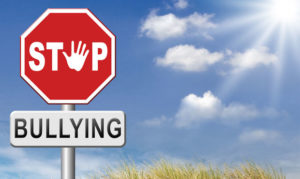Smartphones are proliferating among adolescents, and so is cyberbullying. That’s particularly worrisome due to its potential contribution to the No. 2 cause of teen death: suicide.
About 26.3 percent of the middle- and high-school students who responded to a nine-school survey indicated that they’d been bullied in each of the eight years the poll was taken, the Cyberbullying Research Center found.
That percentage stood at about 18.8 percent back in May of 2007 but climbed to around 34 percent by February of last year.
If those figures aren’t worrying enough, consider the warning the American Academy of Pediatrics published in the July 2016 issue of its journal, Pediatrics. New AAP guidelines urge pediatricians to screen more adolescents for suicide.
The organization highlighted “bullying and pathological Internet use” as prime risk factors for teen suicide attempts.
Internet use in excess of five hours daily has been linked to depression and suicide, the AAP report notes.
Tweens — that is, 8-to-12 year olds — spend on average six hours in front of screens each day, while teens are connected for about nine hours daily, Common Sense Media found.
Overboard: The Impact
Former Miss USA Shanna Moakler last month spoke out about her young daughter’s plunge into the dark waters of the Internet.
Like the popup storms that can turn an afternoon on the water deadly in mere moments, a sudden downpour of comments — with winds whisking words like “whore” and “loser” along with roaring death threats — made Alabama Moakler fear for her life.
Thousands of negative comments rained down on the 10-year-old a few hours after 19-year-old YouTube personality RiceGum posted a video deriding the girl’s vegan diet, her grammar and her body’s premature maturation.
Fortunately, Alabama’s mom was there to ensure the preteen’s safety, and Shanna Moakler was able to use her public position to bring attention to her daughter’s ordeal. For countless other minors, bullying may be just one of many serious problems they face — and for too many, it’s the last straw.
Cyberbullying has become increasingly stressful, and often traumatic, for the most vulnerable adolescents, said James Greenblatt, chief medical officer at Walden Behavioral Care.
“In my practice treating hospitalized adolescents for severe depression and eating disorders, cyberbullying has become a more common precipitant of the downward spiral of self-injury and suicidal thoughts,” he told TechNewsWorld. “Parents are often unaware of the extent and duration of the bullying until the suicide attempt.”
The Anon Effect
Cyberbullying has grown into a global epidemic that’s harming kids and families of just about every socioeconomic status and background, observed Todd Schobel, founder of the anti-cyberbullying app STOPit.
“Before the Internet and before social media, you were able to escape the face-to-face bullying being experienced at school simply by heading home,” he told TechNewsWorld.
These days, bullying can follow victims home and just about anywhere else they try to find a haven, said Dorothy A. Miraglia, who holds a PhD in human behavior and is contributing to the upcoming book, The Use of the Creative Therapies with Bullying and Aggression.
The rise in cyberbullying is a byproduct of the digital age, she noted. Victims often are targeted on social media, online forums or other websites, as well as through SMS and other messaging tools.
“For example, teens can post a Facebook status making fun of a peer or a photo depicting bad behavior,” Miraglia told TechNewsWorld. “The post can be shared causing the victim to be a target of more people who perpetuate the cyberbullying.”
Talk Back
Because cyberbullying often leverages the Internet’s fog of anonymity, victims of online abuse often keep quiet, according to Ross Ellis, CEO of STOMP Out Bullying.
We’ll “never know how many [adolescents] are actually being digitally harassed,” he told TechNewsWorld. “Yet teens who practice cyberbullying don’t care, because they don’t believe they can be caught.”
Many teens may not care — but some perhaps do not grasp the damage they can do to each other online. The place to start to develop a solution may be the same place where much of the trouble began.
“While there is no complete way to stop cyberbullying, educating teens and raising awareness is a must,” said Ellis. “Most imperative is parents raising responsible digital citizens. It is just as important for those who witness hate speech to reinforce positivity by using counterspeech.”
Stay tuned for Part 2.



















































